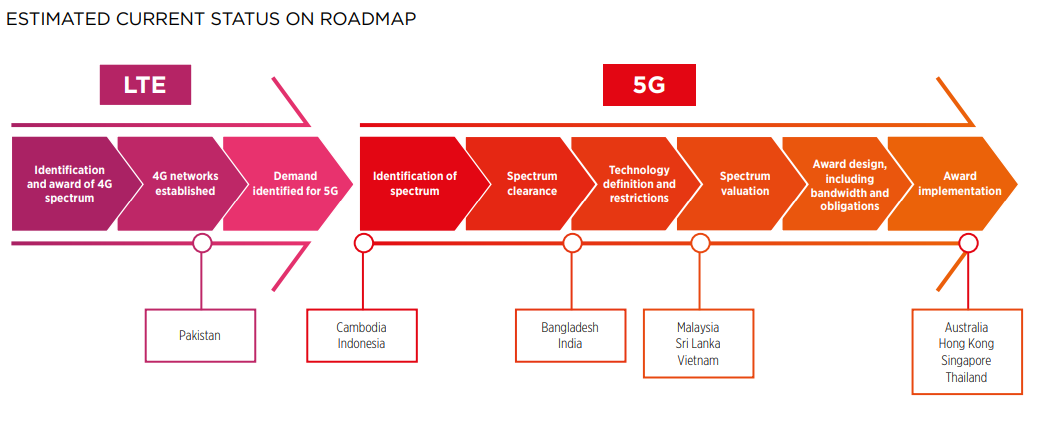PTA Takes an Outdated Approach to Procure QoS System

The Telecom sector around the globe is advancing at a rapid pace and so are their regulatory regimes moving towards cutting-edge regulatory approaches and solutions. However, unfortunately, our national telecom regulator (Pakistan Telecommunication Authority) doesn’t seem to be following the same trajectory. The decision to procure a QoS instead of QoE monitoring and the benchmarking system has surprised many in the industry. While the press release that was even carried by national media have highlighted this ‘benchmarking system’ as if it is something revolutionary. Though, as per industry experts, the QoS system has the same Key Performance Indicators (KPIs) with just the additional feature to carry out surveys on different networks simultaneously.
The experts have questioned the logic of why PTA hasn’t moved towards more advanced monitoring and benchmarking concept and system like the Quality of Experience (QoE) system which is being followed by regulators globally and measures the more important end-user experience.
Apart from procuring the outdated QoS procurement, PTA failed to carry out and lure existing mobile operators in the last spectrum auction. Furthermore, there has not been much progress on the proposed launch of 5G and as per the mobile industry association, the GSMA in its recently released report has placed Pakistan as far too behind its Asian counterpart, which surely isn’t a good sign owing to our technological prowess.

Moving back to the subject, let us see the difference between the outdated QoS and the more advanced QoE monitoring concepts to better understand what it entails and how they are both our points of view.
QoS:
QoS focuses on network parameters like latency, jitter, packet loss, R factor, and MOS, and has its roots in old-school telephony performance monitoring and the early days of network performance management. All of these are still applicable today, but with the increased complexity of emerging services, a new generation of QoS is required. One that goes beyond past SNMP and round-trip statistics. Millisecond accuracy and minute measurements are no longer sufficient to identify the subtle changes that can have a substantial influence on next-generation network performance.
QoE:
Quality of Experience (QoE) on the other hand is the advanced cutting edge system that focuses on the end-user experience. IT teams around the globe are focused on QoE in the same way that marketing has moved away from simple technical indicators like open rate and embraced a more holistic strategy of monitoring the complete customer experience.
The litmus test for successful network performance is the end user’s overall contentment or frustration with the network service experience. QoE attains its goal by examining the information within the data sent over the network, and not just the efficiency of data transfer across the network itself. For example, for a VoIP call, QoE would consider echo, conversational quality, audio level, and imperfections.
Though, this level of quality control demands better network traffic analysis, with improved efficiencies and metadata collection algorithms that collect the key performance indicators. The advancements in automation and AI have made that attainable.
Conclusively, for monitoring and benchmarking voice, SMS, and data, the QoE is a much better approach than QoS as it focuses on the end-user experience. So as for any advanced regulator, PTA should also review its decision of procuring the QoS system and instead opt for the more advance and updated QoE system.
Clarification From the PTA:
In response to this article, PTA wishes to clarify that certain assertions presented in the article are contrary to the facts.
To the article’s claim of “outdated QoS system”, it is clarified that PTA’s QoS Monitoring & Benchmarking Tool has the capability to Benchmark Voice, SMS and Data QoS KPIs of five (5) operators, simultaneously support all the technologies including 2G (i.e. GSM & CDMA), 3G (UMTS, WCDMA, HSDPA, HSUPA, HSPA+), 4G (LTE, VoLTE & LTE-Advance) GSM), in all bands/spectrum, carrier aggregation in contiguous / noncontiguous bands / technologies and it shall also be capable to test 5G technologies. The Tool shall measure the Mean Opinion Score (MOS) based on the latest version of ITU- P.863 (developed in March 2018) to achieve the correct relative service quality between VoLTE, HD-Voice and legacy narrowband telephony.
The article also asserts that “PTA has not moved towards …systems like QoE…which measures the more important end-user experience”. It is clarified that the testing of MOS in above mentioned way has QoE parameters including but not limited to echo, conversational quality, audio level, imperfections etc. Moreover, QoS measurements are also carried out end-to-end i.e. User-to-User or User-to-Content. End-to-End QoS depends on the contributions made by the components, including user, user equipment, access network, IP transport, core network, and the rest of the path end-to-end (e.g. through the Internet).
The purpose of QoS monitoring is to verify the QoS experienced by consumers and to compare the results (from audit exercises) against license obligations. The methods of auditing telecommunication operators include Drive Testing, Consumer Surveys and Data Submission by Operators (typically on quarterly basis). Internationally active testing is the most commonly adopted methodology to measure QoS KPIs. Since active testing has high implementation cost and sampling methodology is very critical, therefore, QoS monitoring tools have to be deployed to replicate a like-for-like QoS performance comparison of service providers.
PTA has also measured the Network Performance Score (NPS) as per the latest European Telecommunications Standards Institute (ETSI) methodology. NPS compares the quality of mobile networks and visualizes QoE that the end users perceive when using common applications in accordance with international standards. Apart from Voice and Data Transfer, Video Streaming, Browsing and Social Media KPIs are also measured to gauge the users’ experience. PTA is the only regulator in South Asia that measures NPS score of mobile operators.
It is pertinent to mention that today’s networks are optimized for people using smartphones. In the near future, users will take advantage of new infrastructure i.e. Humans (smartphone use case), Automotive (connected, autonomous driving, Vehicle-to-X), Industry 4.0 (Smart Manufacturing, private 5G networks) and IoT, mMTC (Smart City, Connected Energy etc.). Key factors for acceptance and use include ultra-high reliability and the ability for real-time interaction. For these future applications and services, it is necessary to measure and rate the interactivity of a network and to efficiently identify bottlenecks in the transmission. The interactivity test through the Tool combines testing round trip latency, packet delay variation, packet error rate and proofing bit rate in one single test. It can measure very short latencies with high accuracy and is ultra-reliable low-latency communication (URLLC) ready.
Moreover, the importance of QoS has been acknowledged in the Final Acts of the World Conference on International Telecommunications (WCIT-12), and Resolution 95 on ITU Telecommunication Standardization Sector initiatives to raise awareness on best practices and policies related to service quality of the World telecommunication Standardization Assembly (WTSA-16).
Our Response to PTA’s clarification:
We respect the clarification provided by our national telecom regulator as it helped us to better understand the QoS system. However, as per our research, sources like GSMA and others entail that the Mean Opinion Score (mentioned by PTA which included QoE parameters) is limited in certain regards and render results from a macro perspective. The sources are mentioned below:
Check out? PTA Opposes the Ban on Cryptocurrency Proposed by Various Government Entities
PTA Taxes Portal
Find PTA Taxes on All Phones on a Single Page using the PhoneWorld PTA Taxes Portal
Explore NowFollow us on Google News!





